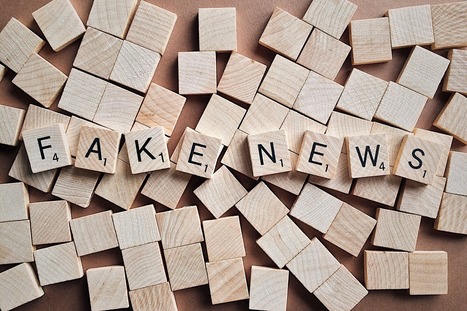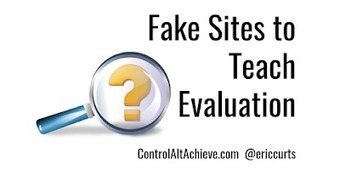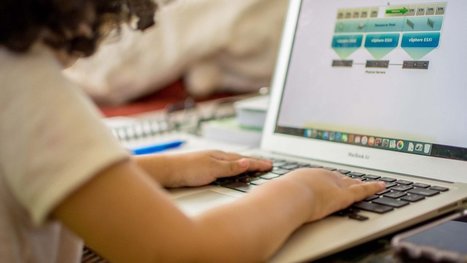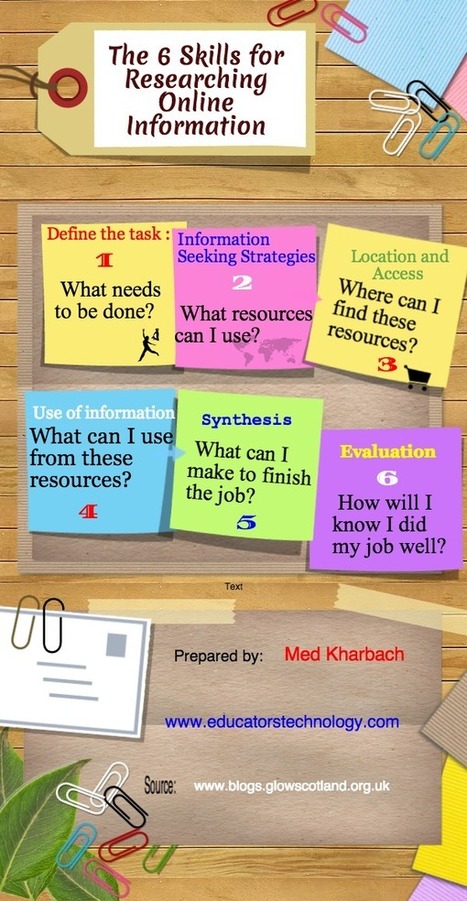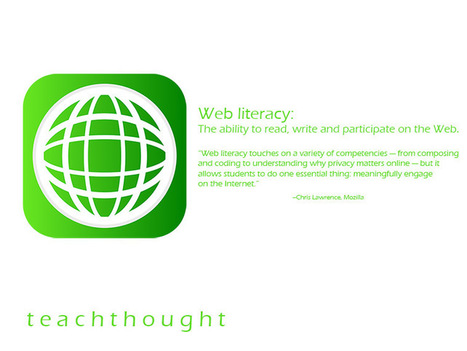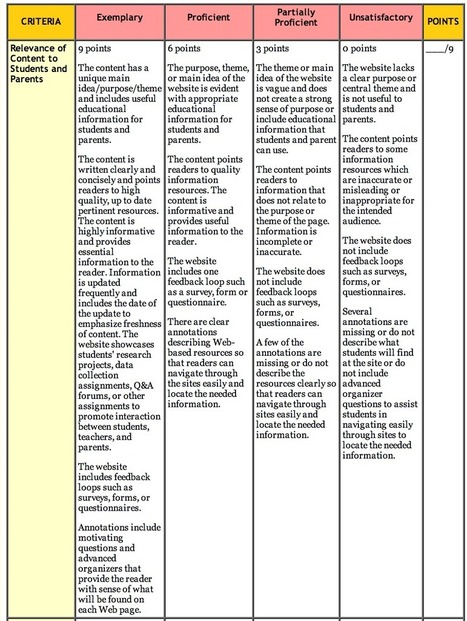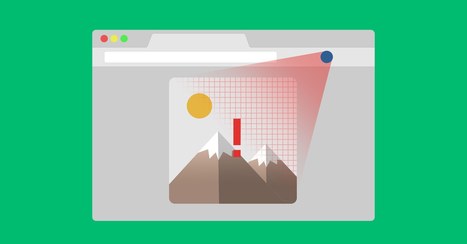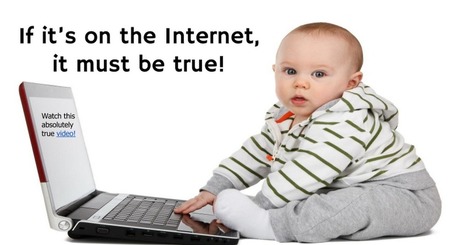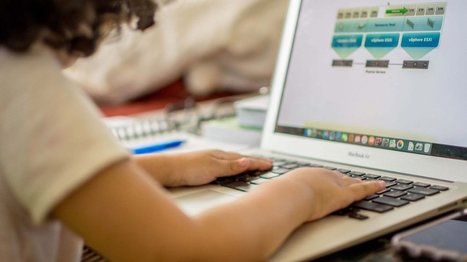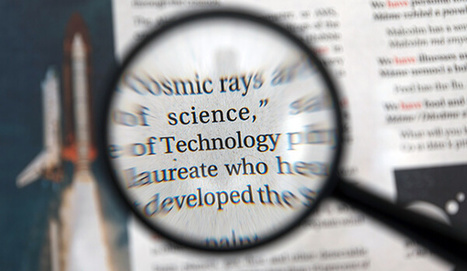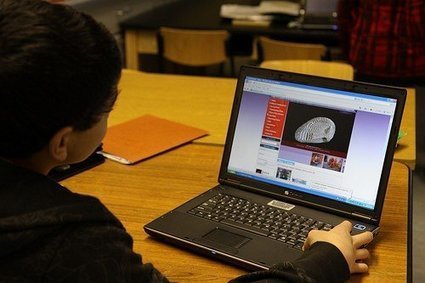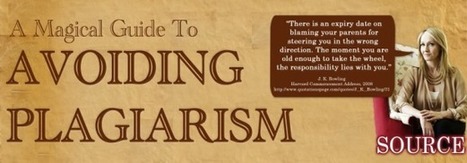 Your new post is loading...
 Your new post is loading...
In a “post-truth” era where people are increasingly influenced by their emotions and beliefs over factual information, fact and fiction can be difficult to distinguish, and fake news can spread rapidly through mainstream media sources and social networks. Moreover, fake news is often meant to do harm, by tricking us into believing a lie or unfairly discrediting a person or political movement.
One of the things I’ve been trying to convince people for the past year and a half is that the only viable literacy solution to web misinformation involves always checking any information in your stream that you find interesting, emotion-producing, or shareable. It’s not enough to check the stuff that is suspicious: if you apply your investigations selectively, you’ve already lost the battle.
As adults we (hopefully) know that not everything online is true. For our students though, this is a concept they need to learn.
Via Ana Cristina Pratas
“Digital literacy involves finding, using and disseminating information in a digital world” (Deakin University, 2016). Digital literacy is also a transversal skill, which means that by having good digital literacy, a person’s ability to learn and improve other skills increases through the use of technology.
In the next 5-10 years, a number of routine jobs will be taken over by automation and artificial intelligence (AI) (ACS, 2016). This automation and AI will also be ingrained in workplaces, homes and everything we do, due to the increased productivity and lifestyle gains that these technologies provide. In order to remain current in the workplace, and to be able to fully function in society, the need for good digital literacy has never been greater.
Welcome to snopes.com, the definitive Internet reference source for urban legends, folklore, myths, rumors, and misinformation.
Via Nik Peachey
Wes Fryer: "Has someone you know shared an article link via email, Facebook, or another social media website that seems too outlandish to be true? Before liking, favoriting, or re-sharing the article link, did you take a few moments to fact-check it by searching online for other sources which either corroborate or refute the article’s claims? If so, congratulations! Your actions in fact-checking links suggest you have some good digital literacy skills. In this post we’ll highlight several useful, online fact-checking strategies and discuss a recent article which can be used with students to highlight this important digital literacy skill."
Via Mary Reilley Clark
Studies suggest that many U.S. students are too trusting of information found on the internet and rarely evaluate the credibility of a website’s information. For example, a survey found that only 4 percent of middle school students reported checking the accuracy of information found on the web at school, and even fewer did so at home (New Literacies Research Team & Internet Reading Research Group, 2006). At the same time, the web is often used as a source of information in school projects, even in early schooling, and sites with inaccurate information can come up high in search rankings.
Listing of resources and tools for and on how to teach students to evaluate information found on the web.
For any research project, you want to use a variety in types of sources as well as points of view. Some assignments will have certain requirements for the sources, in terms of genre of source (academic, popular), format (blog, print) and publication dates. To research a question in depth, the answer to the question of “how many and what type of sources do I need” is all of them. You need a variety of sources, both in type and point of view, in order to fully (or even partially) explore a research question.
A Definition Of Web Literacy (And How Students Can Benefit) Reading, writing and arithmetic are the cornerstones of education. While the methods for teaching them may vary, the three Rs are timeless and universal. They equip learners with the skills necessary to interact and participate in the world. And they lay the groundwork for a set of more complex skills: critical thinking, collaboration, nonlinear thinking and others.
Writing the previous post about RADCAB reminded me of a Common Craft video about website evaluation. That video is embedded below.
|
In many parts of the UK, students who are attending pre-sessional courses are now in the midst of assessments and essay writing.
Regardless whether learners are post-graduate, graduate or K12 students, it is always worth revising how to evaluate web sources with them.
Below is a Padlet with suggestions to use with students.
WHEN MICHAEL BENNETT played for the Seattle Seahawks, he celebrated wins with a victory dance in the team locker room. He did not celebrate them by burning the American flag, contrary to a viral Photoshopped picture that began making the rounds online in September of 2017. If you'd read the fact-checks on sites like Snopes.com, Time, and yep, even WIRED, you would have known that the photo of Bennett burning a flag, his teammates and coach looking on joyfully, was fake.
We are constantly surrounded by information, and it is not always easy to know which sources to trust. Being able to evaluate the credibility of information is an important skill used in school, work, and day-to-day life. With so much advertising, controversy, and blogging going on, how do you sift through the chaff and cut to the chase?
If it’s on the Internet, it must be true! Watch this absolutely true video!
Via Mary Reilley Clark
When I teach students..
... about doing online research, one of things I tell them is to figure out who's posting this article.
In other words, find out who wrote it, and what their possible motivations for writing this particular article really are. People rarely just write--they're usually trying to convince you, the reader, of something they believe.
Studies suggest that many U.S. students are too trusting of information found on the internet and rarely evaluate the credibility of a website’s information. For example, a survey found that only 4 percent of middle school students reported checking the accuracy of information found on the web at school, and even fewer did so at home (New Literacies Research Team & Internet Reading Research Group, 2006).
Want to know if someone plagiarizes a speech? Is the content on a website copied from another website? Do those song lyrics sound familiar? What about those statements? Have they been stolen from books, articles or other public documents? Has a photograph been manipulated?
This rubric inspired by a presentation on EasyBib takes you through a short but effective checklist for determining website credibility.
Via Nik Peachey
What are Your Favorite Tools and Techniques for Helping Students Learn how to Assess Web Content?
Becoming critical consumers of online material requires knowing what qualifies as quality content and how to judge what is good material and what is not.
Library Literacy resources - Some lessons Library Lessons - Annotated Bibliographies Creating a bibliography and research tips - Creating a standard bibliography and research tips Get more from Goo...
RADCAB - Your Vehicle for Information Evaluation -Mnemonic acronym to help students remember a process for website evaluation. RADCAB, which you can learn about at RADCAB.com, stands for relevancy, appropriateness, detail, currency, authority, and bias. The RADCAB website provides a short explanation of each of the aspects of evaluation and why they are significant.
|
 Your new post is loading...
Your new post is loading...
 Your new post is loading...
Your new post is loading...









